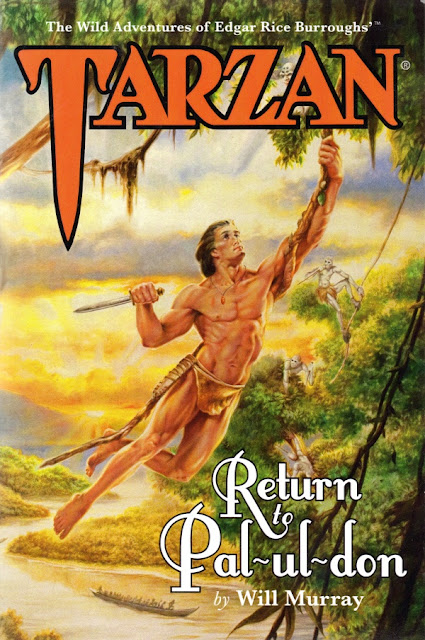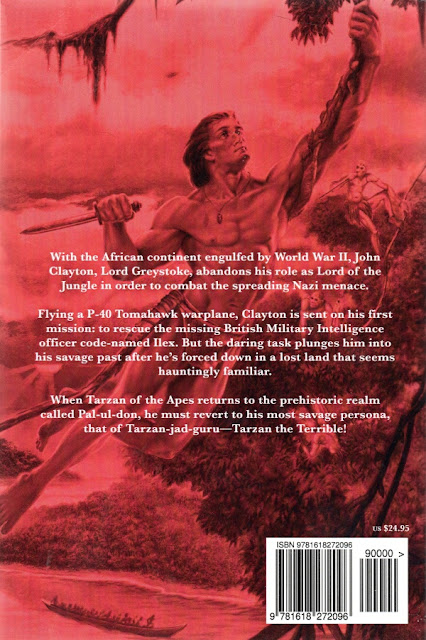This column appeared in the April 12, 1930 issue of the New York Evening Post.
THE CRIME WAVE
By Dashiell Hammett
THE NOOSE. By Philip MacDonald. Dial. $2.
BLUE RUM, By Ernest Souza. Cape & Smith. $2.50.
THE BLACK DOOR. By Virgil Markham. Knopf. $2.
FOLLOWING FOOTSTEPS. By J. Jefferson Farjeon. Dial. $2.
The materials of "THE NOOSE" are not in any way
novel. Anthony Ruthven Gethryn is the usual gifted amateur who stands high in
the graces of Scotland Yard because in the past he has helped the Yard solve
mysteries that had it stumped. He is a drawling gentleman who is sometimes whimsical,
sometimes facetious, and says "y’know" and "p’r’aps." His
wife is beautiful and admires him, as do most women. His current task is to
keep one Daniel Bronson from being unjustly hanged for the murder of a man
named Blackatter in Bellows Wood. Bronson, ex-pugilist proprietor of the Horse
and Hound, has had the misfortune to be found lying on the ground —apparently
he stumbled while running away from the scene of his crime and knocked his head
against a stump —with a discharged shotgun in his hands not far from where his
enemy Blackatter lay with some of his head blown off. There was plenty of other
evidence against the unfortunate Bronson: in his pocket was a letter from
Blackatter making an appointment with him to Bellows Wood that night; a witness
had heard him threaten Blackatter in the Horse and Hound earlier that day. All
that happened months ago. Now Gethryn, convinced of the condemned man's innocence,
has from Thursday to Monday to save him from the gallows. He sets out to save
him by finding the real murderer. With his wife, Chief Detective Inspector Pike
and two reporters from the paper of which he is part owner, Gethryn goes to
Farrow and

begins to re-examine clues that are months old, to question
witnesses, to stir up the neighborhood. The two principal witnesses are feebleminded
Tom Harrigan and the unattractive Dollboys. Gethryn learns something new and
pertinent from Harrigan and hopes to learn much more from Dollboys, but Dollboys
disappoints him by getting himself murdered early Saturday morning. This, you can
see, is all familiar stuff, stuff that can be found in dozens of detective
stories now stacked on bookshop shelves, but what lifts Mr. MacDonald's book
above those dozens is the deftness of his carpentry. "The Noose" has
the neatest plot I have seen in months. It is logical, it is simple and it is
baffling.
"BLUE RUM,” on the other hand, has a lot of good
material in it and fresh backgrounds, but both are so ineptly handled that the
result is very faintly exciting at first and something less than that further
on. Roy Overton, mining engineer, young, out of work, nearly penniless, lands
in Lisbon in search of a job. His poverty leads him to a room in the weird
Penaao Juliana. Shocking things happen then. When Overton can stand
them no longer he leaves to take lodgings with Ericson, a fellow American. That
night pompous Senhor Alfonso, proprietor of the Penaao Juliana, and his wife
are murdered. The Lisbon police suspect Overton. Later he and Ericson return to
the house to hunt

for a paper that tells where the Fortinha Diamond is hidden.
They find, instead of the paper, another corpse— the remains of repulsive
Doctor Pedro. Pursued by the police, they become unwilling stowaways aboard a
ship that presently sinks. They are picked out of the Atlantic by another ship
and work their way to Brasil and to Carvaihoa, where the Fortinha
Diamond is supposed to be hidden and where Senhor Antonio Medico rules his
district with an iron hand while his cohorts drink the blue rum he distills.
Thus it goes, on and on for 463 pages, too many of them filled with
descriptions of places and bits of local color that seem authentic enough, but
do not help the story along at all; too many of these filled with explanations
that deprive the story of every least trace of the mystery that might have
given it glamour, too many of them filled with expositions of the obvious. The
identity of "Ernest Souza" seems to be no longer a secret. That is
too bad. She was well advised when she put a pseudonym on "Blue Rum's''
title page
“THE BLACK DOOR" deals with adventures of Tom
Stapleton—another young American abroad—in Kestrel Eyrie, the ancestral castle
of the Veryans on Ramsay Island near the coast of Pembrokeshire. Gathered there
are Sir Anthony, the head of the family, Arthura and Robert Veryan, Hector
Brasonby, and James Mottram, to await the doom that has already struck down
four members of the family. Later they are joined by Charles Norshire, who
claims kinship with them, but is murdered before his claim can be proven false.
Then a poet comes to

them—chiefly to Arthura—and is slain. Things happen
mysteriously, as is their wont in ancestral castles and in the country
roundabout. There is an aging woman to whose cottage window a candle burns
every night, a definitely odd curator searching for a stolen missal, a locum
feverishly interested in polycythemia, and in the end one more fiend brought to
some sort of justice. Mr. Markham is an American who has been living in Wales.
He has been living there long enough to forget his native tongue: young
Stapleton’s Americanisms are amazing.
There is no mystery in "FOLLOWING FOOTSTEPS.'' John
Trestle, a diluted-Locke sort of character, saves a pickpocket named Mary from
arrest, tries to save her from a life of crime, stands between her and the
former accomplices who pursue her, and, through her nobility, is finally
reunited to the lovely lady Beatrice Warrener, It is all pretty thin.
Recommended: "THE NOOSE."



















































